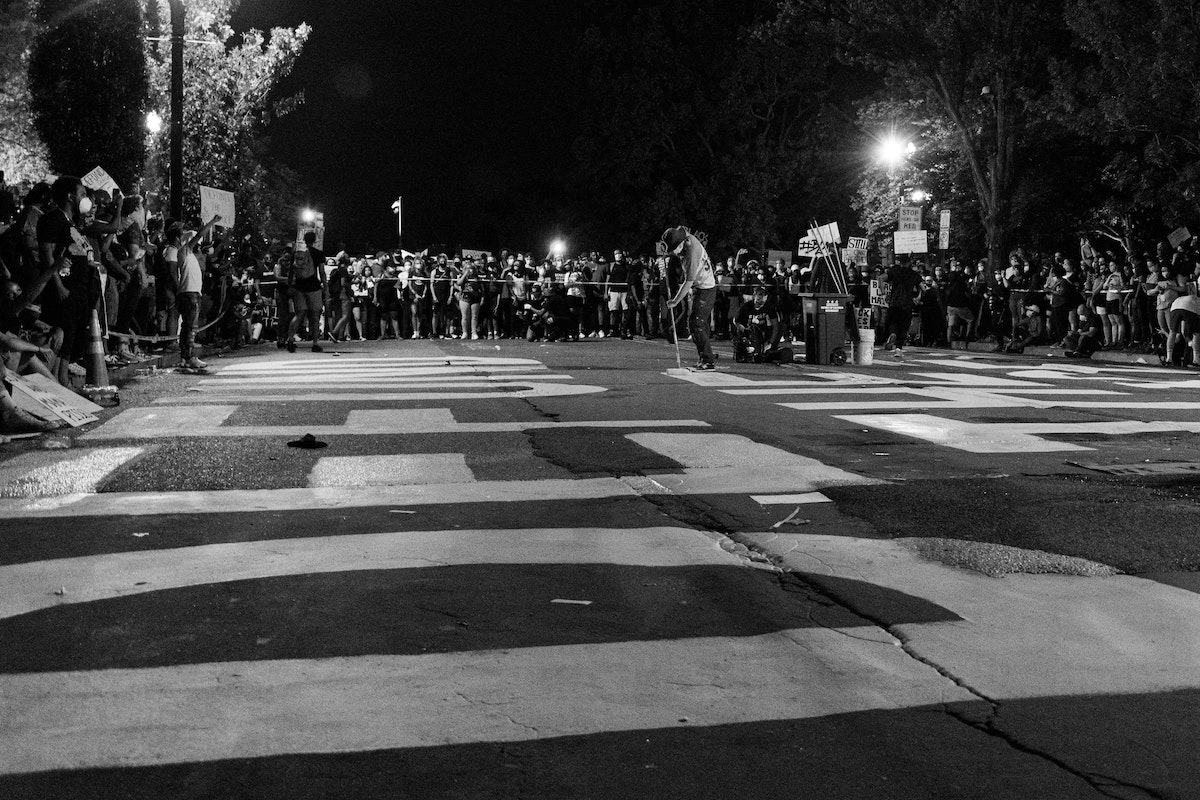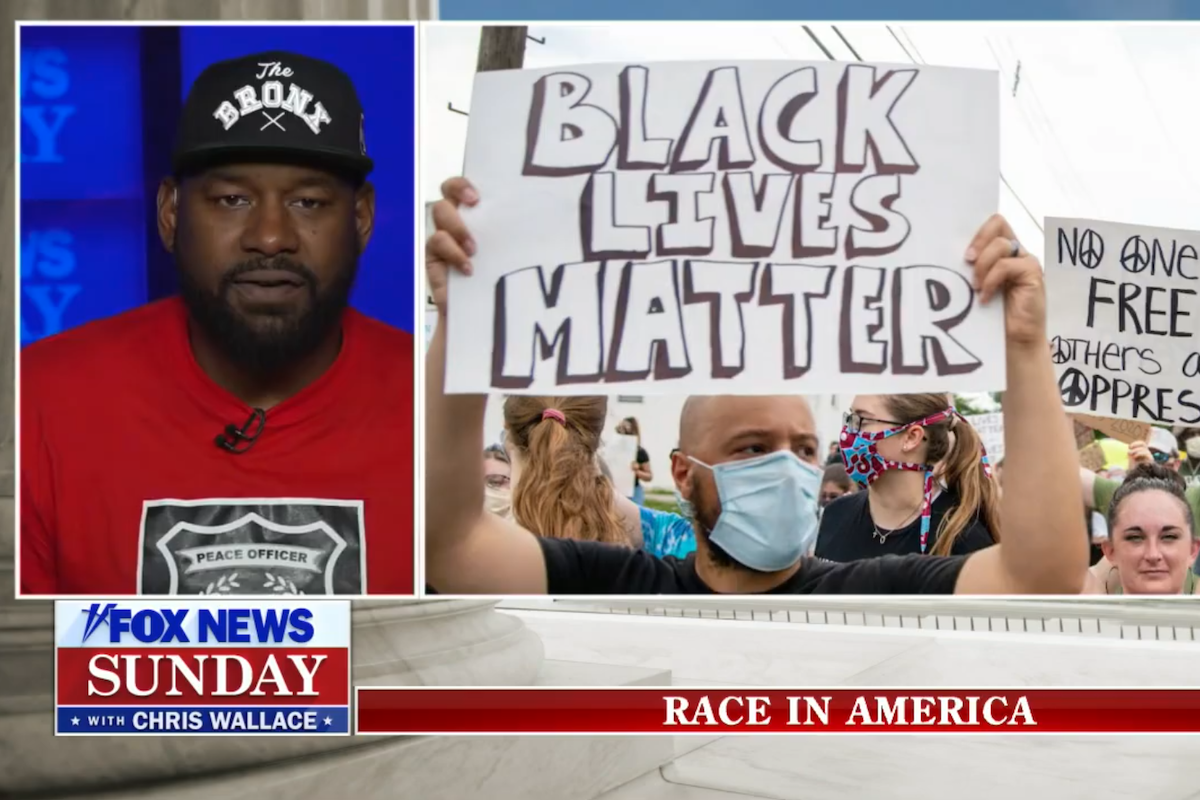Activism
Black Lives Matter, So Refund the Police
It is precisely because black lives matter that we must recognize that defunding the police has only hurt those it was intended to help.

During the summer of 2020, following the deaths of George Floyd and Breonna Taylor, it was easier to count how many cities didn’t have Black Lives Matter (BLM) protests than to count the ones that did. Metropolitan areas across the United States, and the world, saw massive turnouts protesting police violence against African Americans, and the movement received endorsements from a number of corporations, all pledging to do their part to combat racism. It didn’t take long for BLM activists and supporters to capitalize on this newfound popularity, quickly adopting what former President Obama called a “snappy” but “counterproductive” slogan for their supporters to shout in the streets and on social media: “Defund the Police.”
This new rallying cry became the subject of much debate, and the source of much confusion. Many observers remain unsure what the practical application of defunding the police entails. Although some hope that one day the police will be completely abolished, the majority of those calling to defund the police say they want to reallocate police funding to social programs that would better benefit communities. In recent months, funding redistribution found its way into the legislatures of some of the United States’ largest cities. Despite generally unfavorable feelings toward defunding the police—a new Gallup poll found that only 18 percent of Americans support the initiative—cities such as Minneapolis, Portland, Los Angeles, Seattle, and New York have all collaborated with activists to make cuts to police budgets in an attempt to make communities safer for racial minorities.
Public officials across the country are only now discovering the foreseeable consequences of these decisions. City legislatures are realizing that in their attempt to make life better for marginalized groups, they have only contributed to the disproportionate hardships they already face. As it becomes apparent that moves to defund the police have exacerbated criminality, some local authorities are reversing cuts to police budgets passed last year amid much radical breast-beating but without much thought for who would bear the likely consequences.
Minneapolis is the epicentre of the defund movement—the city in which George Floyd died last May as he was being taken into police custody. In spite of a spike in crime there in 2020, including a 70 percent increase in homicides, the Minneapolis City Council decided in December to redistribute $8 million from the police budget to other violence prevention services. At the time, Mayor Jacob Frey said there were “good reasons to be optimistic about the future in Minneapolis.” The move to reallocate funds away from the police department was proclaimed a “Safety for All” plan by its supporters. Unfortunately, it has made the streets of Minneapolis considerably less safe. In the first three weeks of 2021, Minneapolis saw a 250 percent increase in gunshot wound victims from the same time last year.
Frey’s optimism didn’t seem to account for the lawlessness of the George Floyd Square “autonomous zone.” Since last May, a group of militant activists has barricaded George Floyd Square—the intersection where Floyd died—off from public access. At least 19 shootings have occurred in the area since Floyd’s death, several of them fatal. The aunt of a shooting victim said that her nephew was unable to receive medical attention because those occupying the area refused to let law enforcement into the zone. Needless to say, a city in which armed militants are able to prevent police from investigating a shooting does not grant “safety for all.” The autonomous zone has also had a negative impact on black business owners, who report that they have lost 75 percent of their business due to the lack of traffic in the area.
So, even though these activists and the Minneapolis City Council claim moves to defund the police are intended to protect black lives, their actions are having exactly the opposite effect. Not only are black lives being lost because law enforcement is unable to do its job, but black business owners are losing their livelihoods because of city officials’ failure to act. These issues are only compounded by the fact that the number of police officers in the city has been reduced. In February, likely recognizing the adverse impacts of police budget cuts, Minneapolis city officials voted to refund the police with $6.4 million. That means the budget has still been reduced by $1.6 million, but this is a necessary step away from the destructive decision to defund police without providing an equally or more effective alternative.
The experience in Portland, Oregon, has followed a similar arc. Last June, city officials voted to reduce the police budget by at least $15 million and disband the Gun Violence Reduction unit, which one city council member described as a “racist” task-force. Amanda Fritz, a member of the Portland City Council, said that “if ever there was a time for white people to be quiet and listen… this is that time.” Until recently, claiming that people of a certain race should not participate in hugely consequential policy debates would have been unacceptable. However, this kind of alarming rhetoric is becoming increasingly popular with activists and commentators, and elected officials now feel able to make statements demanding that we neglect the views of an entire group of individuals based on their skin colour.

However, if Fritz—a white woman, as it happens—insists, perhaps she should take her own advice and listen to how black Americans feel about defunding the police. A Gallup poll conducted last summer found that 81 percent of black Americans said they would like police to spend the same or more time in communities. This illustrates an all-too-common occurrence in the defund movement—white public officials like Fritz think they are acting in the interests of African Americans, when in reality such decisions not only contradict what black Americans want, but also end up hurting them most. By March 10th, Portland police had responded to close to 200 shootings in 2021 alone, forcing law enforcement to launch a new, but smaller, Gun Violence Reduction team. The city has seen a dramatic increase in homicides—20 people have been killed in 2021 so far compared with only one homicide by the same time last year.
Increasing homicide rates disproportionately impact black communities. Despite only making up about 13 percent of the population, black Americans accounted for 54 percent of homicide victims in 2019. This isn’t an anomaly. A study of homicide victims across several decades found that blacks were six times more likely to be victimized than their white counterparts. Considering most homicides in Portland are the result of gun violence, the original decision to disband the Gun Violence Reduction unit certainly hurt black residents more than it helped them. Fortunately, Portland has taken steps towards refunding the law enforcement budget. Portland Mayor Ted Wheeler announced that the increase in crime in the city had “reached crisis proportions,” before requesting an additional $2 million in police funding. This is not nearly enough to compensate for the $15 million-plus taken from Portland’s police force, but it again demonstrates a belated acknowledgement on the part of city officials that it is inappropriate to pass legislation based on the untested activist demands.
Los Angeles also experienced a spike in shootings after the city slashed $150 million from law enforcement in July. In the first two weeks of the new year, there were eight times as many shootings as there were in the first half of January in 2020. A similar trend continued into February, as the number of gunshot wound victims increased by 141 percent in comparison to the same time last year. LAPD Deputy Chief Regina Scott has claimed that 65 percent of these shooting victims were in South Los Angeles, an area of the city predominantly inhabited by racial minorities, particularly black and Hispanic Americans.
Less policing correlates with more instances of gun violence, and these occur disproportionately in communities where minorities live. Asian Americans have also endured more victimization in Los Angeles. Anti-Asian hate crimes more than doubled in the city from 2019 to 2020, but the number of Asian American victims is likely much larger—these figures simply record the number of crimes deemed racially motivated in Los Angeles County. Although some of this violence may be attributable to anti-Asian sentiment due to COVID-19, a reduction of police presence in the city has surely not helped diminish the problem. Consequently, Los Angeles County Metro voted to increase police funding by $36 million.
The pattern is not difficult to discern. Reduced police budgets hinder law enforcement’s ability to prevent and combat crime, which negatively affects racial communities most dramatically. It also demonstrates that the popular narrative espoused by Black Lives Matter—that police pose the gravest threat to the safety of black Americans—is simply false; violent crime has a much more damaging impact on black Americans and on all racial minorities.
At least Minneapolis, Portland, and Los Angeles have backtracked slightly on their defunding efforts. Cities like Seattle and New York have yet to change their strategy. Despite clear evidence that slashing police budgets hurts minorities most, officials in both cities have stubbornly failed to make changes. Seattle has not refunded its police after it reduced the department’s budget by $12 million last November, despite 2020 having the highest number of homicides the city has seen in over two decades. To make things worse, SPD’s interim Police Chief Adrian Diaz stated that up to 45 percent of those homicide victims were black Americans. Instead of implementing reforms that will actually help these communities, the city has decided to maintain their stance on defunding, choosing to listen to radical activists rather than respond to the facts on the ground.
The situation is no better in New York. In July, the NYC City Council cut over $1 billion dollars from the police budget, and sought to reallocate much of that funding to other departments, such as the Department of Education and the Department of Health & Mental Hygiene. Unfortunately, these departments were not capable of handling the crime surge that New York experienced in 2020. Compared to 2019, New York City experienced a 97 percent increase in shootings and a near-45 percent increase in homicides, disproportionately victimizing black Americans. Anti-Asian hate crimes also increased in New York by 833 percent, a larger spike than in any other US city.
As none of the aforementioned cities has yet completely reversed its measures defunding the police, the public must push for change. The failure of BLM’s “Defund the Police” campaign should force society to acknowledge that effective reforms must consider the empirical evidence and then draw reasonable conclusions instead of working backwards from ideological demands. Trust between civilians and police must be repaired if our cities and their inhabitants are to flourish and succeed. However, defunding the police is not the answer. Our communities should not try to work without police. Rather, elected city officials should start developing ways for communities to work with police. This means increased community collaboration, better training for officers, and more not less funding. It is precisely because black lives matter that we must recognize that defunding the police has only hurt those it was intended to help.
Andrew Sansone is a freelance writer who specializes in subjects of politics, crime and culture. You can follow him on Twitter at @AndrewSansone15.
Photo by Koshu Kunii on Unsplash






